
It happens to most of us, we get involved in projects and tasks, not of our own creation, and end up overlooking the true focus of what we need to be doing. Essentially, we get involved with ideas that create more work as opposed to ideas that work. Sometimes this creates a backlog of things that really need to be done and catching up can be a major time soak. Such is the case here.
What follows is a roundup of new sensors and related devices that were introduced this past week that, for whatever reason, almost slipped through the cracks. After all, this is Sensors Online, is it not? Enjoy!
Three-Axis Linear Hall-Effect Sensor IC
This week, Allegro MicroSystems released a three-axis linear Hall-effect sensor IC that provides 12-bit digital output words that are proportional to the strength of the field present in each of the X, Y, and Z axes. The quiescent output value (zero magnetic field applied) is at mid-scale.
The device is preconfigured for use in a joystick mode that includes crouch capability or single-ended X, Y, and Z modes. Single-ended configured devices for 3D linear sensing or 2D angle sensing applications are available with three factory-programmed sensitivity ranges: ±500 G, ±1000 G, and ±2000 G.
Other features include an I2C interface, configurable power management, and a sleep-mode current of 14 nA typical. Available in a 3 mm x 3 mm x 0.8 mm, 10-contact DFN package (“EJ”), price for the ALS31300 is $0.55 each/1,000.
An ALS31300 linear Hall-effect sensor IC data sheet is available.
Industrial Strength LVIT Linear Position Sensors
True to it LVIT roots, Alliance Sensors Group unveiled its LV-45 series inductive, contactless linear position sensor using LVIT technology. Groomed for the rugged, industrial arena, the sensors can withstand the high vibration and severe shock environment found in steel, aluminum, and paper mills, as well as extremes of temperature and humidity found in most outdoor applications.
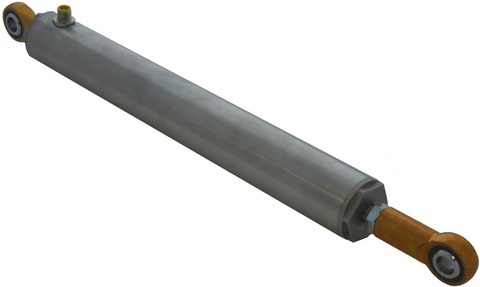
The series relies on a proprietary inductive technology that allows it to replace traditional DC-LVDTs in most applications. A unique coil design permits the sensor to be both shorter and more rugged than its DC-LVDT counterpart while operating over a wider temperature range. Other features include an operating temperature range from -40°C to +85°C, ranges from 100 mm to 450 mm with various analog outputs, double shaft seals, ½-20 UNF externally threaded core rod (core is captivated so it can't come out), axial or radial connector or cable terminations, 1.75-in. (44.5 mm) outer diameter body with 5-mm wall thickness, and a1/2-20 UNF threaded or rod eye end.
Optional mounting hardware is available. An LV-45 datasheet is available for your convenience.
UL-Approved Thermistor
Ametherm’s SL15 60004, a UL-approved circuit-protection thermistor, measures just 15-mm diameter. Amazing for its compact footprint, the device carries a maximum continuous current rating of 4A and energy rating of 50J. Previously, designs required larger diameters in the realm of 22 mm to achieve the same high current and energy ratings. Other features include a resistance of 60Ω, dissipation constant of 15 mW/°C, and a thermal time constant of 45 s.
The thermistor can handle body temperatures up to +194°C at 100% of its maximum current rating. Samples and production quantities of the devices are available now, with factory lead times of eight weeks. Volume pricing starts at $0.25 per piece. You can also checkout an SL15 60004 datasheet for more specs and options.
Phosphorus Analyzer Eliminates Lab Lags
Endress+Hauser introduced its Liquiline CA80TP analyzer that is capable of measuring total phosphorus on-line. Claiming to dramatically reduce test times to obtain results compared to lab methods, the CA80TP uses a thermal digestion technique along with colorimetric analysis, requiring only a small quantity of reagents. With online measurement there is no waiting for lab analysis. The CA80TP measures phosphorus in ranges of 0.05 to 10 mg/l or 0.5 to 50 mg/l.
It has two 4-20-mA outputs with the option for additional outputs including Modbus RS-485, Modbus TCP, and EtherNet/IP. The 4 mA to 20 mA outputs transmit measurement values while the other outputs can be used to transmit the process variable, status, and diagnostic information. The analyzer can be equipped with an energy-efficient cooling system to maintain reagent quality and increase lifespan. Automatic cleaning and calibration functions ensure the analyzer works reliably and without manual intervention over an extended period of time. Datasheets and configuration data are available for the Liquiline CA80TP phosphorus analyzer.
Dew/Frost Point Sensor
Edgetech Instruments’ Model DX primary method chilled mirror dew/frost point sensor expands the company’s line of direct-insertion hygrometer sensors. The component integrates a PRT temperature sensor and can be inserted into the process stream or used to monitor the local environment. With the integral temperature sensor, a single penetration promises to reduce installation cost and improve relative humidity accuracy because the temperature and dew/frost point are measured at the same location.
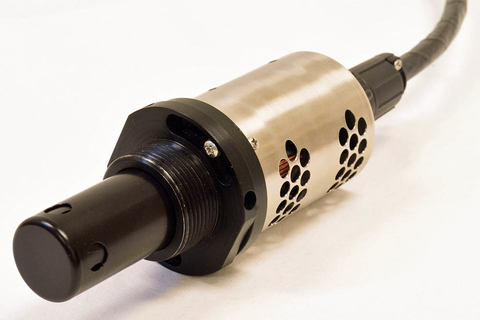
Other features include active cooling, a dynamic range of -40°C to +95°C, active sensor temperature compensation and isolation, an integrated micro aspirator option that gives faster response in static environments, and an integral barometric pressure measurement option. For more details, contact Edgetech Instruments, Inc.
Chemical Controller Provides Visual Status
Evoqua Water Technologies launched Blu-Sentinel SE, a chemical controller designed for commercial recreational water applications such as aquatic facilities and water parks. The controller features an intuitive, color touchscreen display and a unique color-based status indicator in the flow cell that provides a visual indication of water quality. Legends are: blue = all is good, yellow = check parameters, red = fault, check immediately. Measurements include free chlorine, pH, ORP, and temperature. In addition, it continually regulates the dosage of disinfectants, provides pH correction, and displays web views allowing all measured parameters to be displayed on internet-enabled devices.
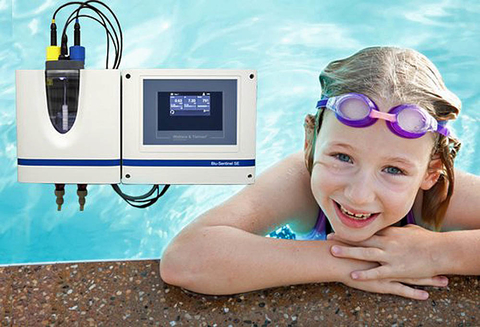
The device consists of a pressure-resistant flow cell supporting up to three sensors, and electronics that employ a 4-in. touch screen with swipe technology as a user interface. A multi-sensor in the flow cell includes a sample water flow switch, temperature sensor, and large water ground to minimize signal noise. Additionally, a flow control valve ensures a constant sample water flow. For more information, contact Evoqua Water Technologies.
Industrial Camera Goes GigE & USB 3.1
IDS enhances its established uEye SE all-round industrial camera by offering it in GigE and USB 3.1 Gen 1 versions. The uEye SE, a mainstay in numerous industrial and non-industrial applications, will be available as both a GigE and USB 3.1 Type-C connection, in each case as a screw-on housing version or as a board stack version. All versions employ a broad range of CMOS sensors with a rolling or global shutter.
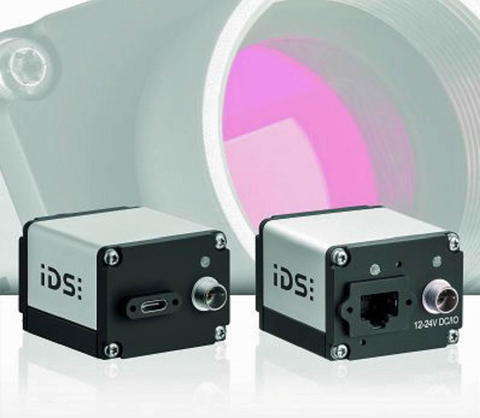
The first 25 models that IDS will launch as of October are versions with CMOS sensors from Sony, ON Semiconductor, and e2v with rolling or global shutter. Sony sensors include Pregius IMX253, IMX304, IMX255, and IMX267 sensors with an 8.9 and a 12.3 Mpixel resolution. Contact IDS for more specs and availability.
Fingerprint Technology For High-Rel Security & ID
Leti and Partners in the PiezoMAT Project developed an ultra-high resolution pressure-based fingerprint sensor that enables resolution more than twice as high as currently required by the US Federal Bureau of Investigation (FBI). Proof of concept demonstrates that a matrix of interconnected piezoelectric zinc-oxide (ZnO) nanowires grown on silicon can reconstruct the smallest features of human fingerprints at 1,000 dots per inch (DPI).
The eight-member project team of European companies, universities, and research institutes fabricated a demonstrator embedding a silicon chip with 250 pixels, and its associated electronics for signal collection and post-processing. The chip was designed to demonstrate the concept and the major technological achievements, not the maximum potential nanowire integration density. Long-term development will pursue full electronics integration for optimal sensor resolution. For more info, contact the PiezoMAT Project.
Mechanical Sensor Measures Two Positions
Also this week, Microprecision introduced the MP600 series mechanical sensors capable of detecting two positions in one single device. The distance between the two positions can be customized to specific applications between 0.3 mm and 1.5 mm. Fixed NC and NO contacts activate with no measurable hysteresis. Repeatability is better than 5 µm and depending on cable selection, operating temperature range is from -40°C to +130°C. The cable termination can be supplied with a M12 connector.
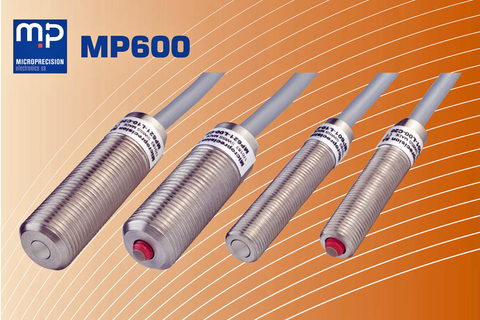
Additionally, the switching mechanism is designed for low voltage applications up to 30 Vdc. It is self contained and can be inserted in multiple forms and shapes of housings. The IP67 rated standard housing sizes are M8 and M12 with a pin or ball plunger. For more specs and info, contact Microprecision.
Fingerprint Capture System
QT-Morpho unveiled MorphoTop Slim, what it calls a convenient and innovative solution for enrollment. The ultra-compact fingerprint capture unit breaks with previous generations as it is six times smaller.
Based on the TFT technology, the terminal allows the capture of 10 fingers flat or rolled. Like its predecessors, MorphoTop Slim integrates into the MorphoESA enrollment solution. It covers several markets and has a wide range of uses such as border control, police investigations, mass enrollment, or e-KYC1. MorphoTop Slim is certified FBI IQS Appendix F. For more information, contact QT Morpho.
Thermostats Setup Shop On The IoT
Selco Products introduced its eCap Series IoT-ready electronic thermostats that can provide low cost, advanced control for many diverse markets. In addition to controlling temperature in a given application, they manage most of the energy consuming components. For example, HVAC, lab equipment, medical devices, plastics, packaging, and commercial food equipment sectors are setting new targets in regards to sustainability, where energy savings play an important role in their applications.
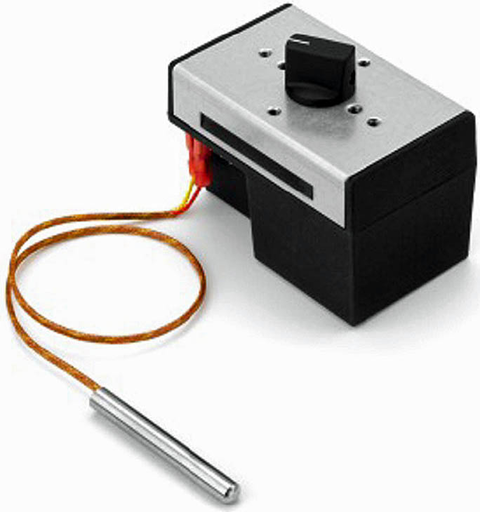
The eCap series consumes less than 30 mW in idle state. That makes this new A wide variety of sensors are supported by the eCap series including NTC thermistors, thermocouples (type J, K), and RTDs. The components sense from -40°F to +2012°F. They employ a 30A relay for heavy-duty loads and there are two additional versions with 12A or 20A relays. Contact Selco Products for more info on the eCap Series.
Mini Planar Rosette Strain Gage Pattern Eases PCB Testing
This week, the Micro-Measurements leg of Vishay Precision Group introduced its S5198, a miniature rectangular planar rosette strain gage pattern for printed circuit board (PCB) testing. Incorporating advanced sensors technology and available in two unique strain gage designations (C5K-XX-S5198-350/33F and C5K-XX-S5198-350/39F), the Micro-Measurements S5198 pattern provides precise strain detection with minimal non-uniform PCA strain gradient effects and operation to +200°C.
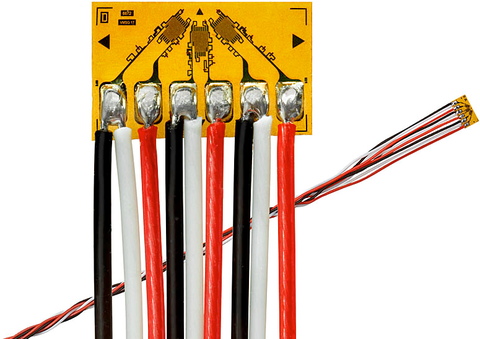
The strain gage boasts an industry best-in-class resistance specification of 350Ω, as compared to the 120Ω typical industry standard. This promises to reduce the unwanted self-heating and heat dissipation effects commonly found among substrates with poor heat conductivity, such as PCB’s. Other features include a grid length of just 0.36 mm and pre-attached Teflon-insulated flexible thin cables consisting of three twisted wires per grid.
In addition to PCB testing, the pattern is suitable for ball grid array (BGA) component testing, spherical bend testing, mechanical shock testing, PCB flexures, and in-circuit testing (ICT). The S5198 is RoHS compliant and is utilized in accordance with IPC–JEDEC 9702, IPC–JEDEC 9704, and JEDEC JESD22-B111 standards. More information about the S5198 pattern is available by contacting the Vishay Precision Group.
About the author
Mat Dirjish is the Executive Editor of Sensors magazine. Before coming on board, he covered the test and measurement and embedded systems market for Electronic Products Magazine, after which he spent thirteen years covering the electronic components market for EE Product News and Electronic Design magazines. He also has an extensive background in high-end audio/video design, modification, servicing, and installation.